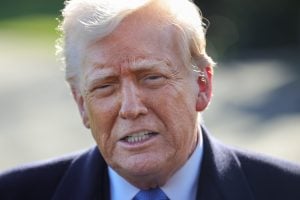Latest forecasts from WMO Global Producing Centres of Long-Range Forecasts indicate a 55% likelihood of a transition from the current neutral conditions (neither El Niño nor La Niña) to La Nina conditions during December 2024 to February 2025. The return of the ENSO-neutral conditions is then favored during February-April 2025, with about 55% chance.
What India Needs To Know About La Niña’s 2025 Arrival
Why In News
- Latest forecasts from WMO Global Producing Centres of Long-Range Forecasts indicate a 55% likelihood of a transition from the current neutral conditions (neither El Niño nor La Niña) to La Nina conditions during December 2024 to February 2025. The return of the ENSO-neutral conditions is then favored during February-April 2025, with about 55% chance.
ENSO Circulation
- La Niña refers to the large-scale cooling of the ocean surface temperatures in the central and eastern equatorial Pacific Ocean, coupled with changes in the tropical atmospheric circulation, such as winds, pressure and rainfall. Generally, La Niña produces the opposite large-scale climate impacts to El Niño, especially in tropical regions.
- While El Niño is often associated with heatwaves and droughts, La Niña typically ushers in cooler, wetter conditions. However, the impacts of La Niña, like its counterpart, depend on geography and pre-existing climatic conditions.
ENSO Circulation
La Nina
- “The year 2024 started out with El Niño and is on track to be the hottest on record. Even if a La Niña event does emerge, its short-term cooling impact will be insufficient to counterbalance the warming effect of record heat-trapping greenhouse gases in the atmosphere,” said WMO Secretary-General Celeste Saulo.
- “Even in the absence of El Niño or La Niña conditions since May, we have witnessed an extraordinary series of extreme weather events, including record-breaking rainfall and flooding which have unfortunately become the new norm in our changing climate,” said Celeste Saulo.
- As of the end of November 2024, oceanic and atmospheric observations continue to reflect ENSO-neutral conditions which have persisted since May. Sea surface temperatures are slightly below average over much of the central to eastern equatorial Pacific.
- However, this cooling has not yet reached typical La Niña thresholds. One possible reason for this slow development is the strong westerly wind anomalies observed for much September to early November 2024, which are not conducive for La Niña development. The previous Update, issued in September, forecast a 60% likelihood of la Niña in December-February.
- Seasonal forecasts for El Niño and La Niña and the associated impacts on the climate patterns globally are an important tool to inform early warnings and early action.
India And La Niña: The Localised Impacts
- India, with its weather heavily influenced by the monsoon system, stands out as a region where La Niña’s effects are pronounced. Here’s what India could expect in 2025:
- Colder and Wetter Winters La Niña is synonymous with extended winters in India, particularly in the northern and northwestern regions. States like Punjab, Haryana, and Rajasthan may witness prolonged cold spells and dense fog, disrupting daily life and transport. While cooler temperatures can benefit crops like wheat, extreme cold can adversely impact human health and productivity.
- Enhanced Monsoon Activity : The Indian monsoon is highly sensitive to the ENSO cycle. During a La Niña year, monsoon rains are typically above average. This could result in extended monsoon activity into late September or October, benefiting water reservoirs and hydroelectric projects but also increasing the risk of flooding in vulnerable areas like Assam, Bihar, and parts of Maharashtra.
- Impact on Agriculture : Agriculture forms the backbone of India’s rural economy, with over 50% of the population dependent on it. La Niña’s heavier rains may bolster rabi (winter) crop production by improving soil moisture. However, excessive rainfall could also lead to waterlogging in key rice and wheat-growing areas, potentially damaging crops and delaying harvests.
- Water Resource Management : While La Niña may replenish groundwater levels and reservoirs, unplanned water discharge during heavy rains could cause flooding in urban areas. Coastal cities like Mumbai and Chennai, already prone to waterlogging, may need robust disaster management systems to prevent disruptions.
- Public Health Challenges : The extended rainy season and cooler temperatures could exacerbate waterborne diseases, including cholera and dengue, particularly in densely populated urban areas. Increased healthcare preparedness and public awareness campaigns will be critical in managing these risks.
Global Impacts Of La Niña In 2025
- Increased Rainfall in Asia and Australia : La Niña is known for amplifying monsoon rains in Southeast Asia and Australia. In 2025, countries like Indonesia, Thailand, and northern Australia may experience heavier-than-average rainfall, raising concerns about flooding and landslides. This pattern is a mixed blessing for agriculture: while water-intensive crops may thrive, excessive rainfall can damage harvests and disrupt food supply chains.
- Heightened Atlantic Hurricane Activity A hallmark of La Niña is its propensity to fuel hurricanes in the Atlantic Ocean. Warmer-than-usual Atlantic waters and reduced vertical wind shear create ideal conditions for the development of intense storms. In 2025, coastal regions in the U.S. and the Caribbean could brace for a more active and severe hurricane season.
- Droughts in the Americas South America, particularly parts of Brazil and Argentina, often grapples with dry conditions during La Niña events. The reduced rainfall can impact major agricultural zones, causing crop stress and threatening global commodity markets like soybeans and coffee.
- Cooler Temperatures in Europe and North America Northern Europe and parts of North America might see cooler-than-average winters. While this might offer respite from the intensifying global warming trends, prolonged cold spells can strain energy systems and disrupt transportation.
- Ecological Impacts on Oceans The cooler Pacific waters during La Niña events stimulate nutrient upwelling, supporting marine life in coastal regions. However, the increased variability in ocean temperatures can disrupt coral reefs and migratory patterns of marine species.
What Should India Do to Prepare
- Given La Niña’s potential impacts in 2025, India must adopt proactive measures:
- Strengthening Agricultural Support: Ensure timely distribution of weather forecasts to farmers. Promote crop diversification to reduce risks of crop failure. Invest in water management systems to prevent waterlogging and droughts.
- Urban Resilience and Disaster Management:
Upgrade drainage systems in flood-prone cities.
Establish early warning systems for floods and cyclones.
Conduct public awareness campaigns on health risks during extended winters.
Energy and Resource Planning: Prepare for increased energy demand due to prolonged cold spells. Optimise reservoir storage for irrigation and power generation.

































